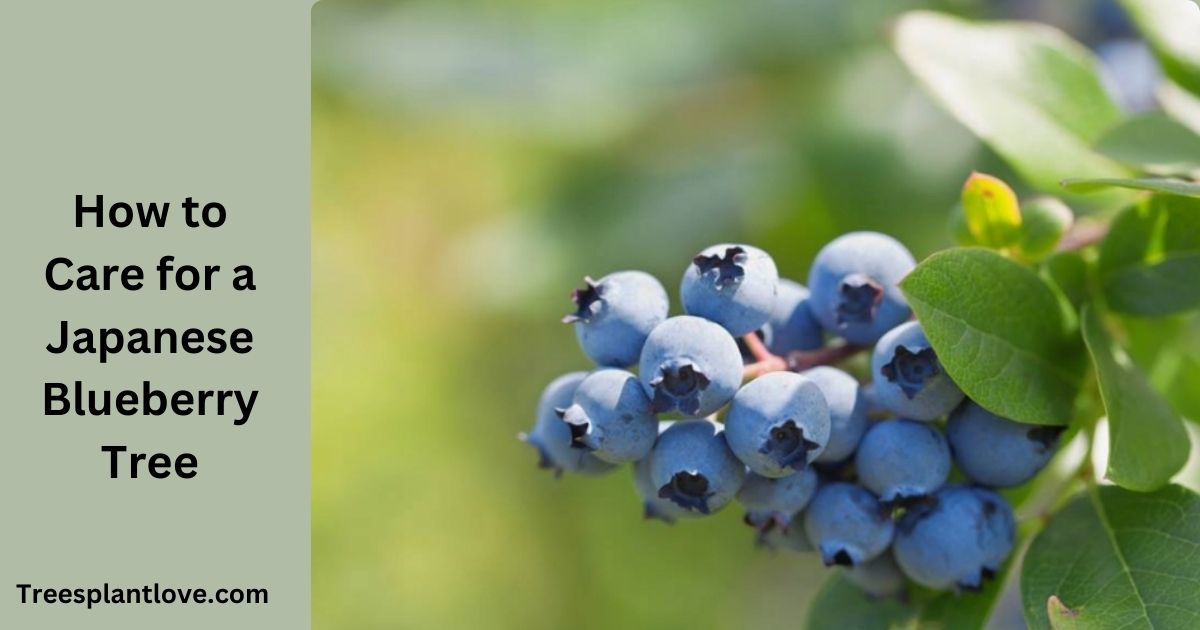
How to Care for a Japanese Blueberry Tree: Essential Tips for Thriving Growth
How to Care for a Japanese Blueberry Tree: The Japanese blueberry tree (Elaeocarpus decipiens) is a versatile and attractive plant that has earned popularity in gardens and landscapes across various climates.
Known for its lush, evergreen foliage and delicate white flowers that bloom in spring, this tree offers year-round beauty. However, to truly thrive, the Japanese blueberry tree requires the right care and attention. Whether you are a novice gardener or an experienced horticulturist, this guide will help you understand how to properly care for a Japanese blueberry tree to ensure it flourishes in your garden.
Choosing the Right Location
The first step in caring for a Japanese blueberry tree is selecting the ideal planting site. This tree prefers full sun to partial shade. When planting, ensure that the site receives at least 4-6 hours of direct sunlight daily, as too little sunlight can hinder its growth and reduce flowering.
Additionally, the tree thrives in well-draining soil. While it can tolerate a variety of soil types, it does best in slightly acidic to neutral pH soil. Avoid areas where water tends to pool, as poor drainage can lead to root rot.
Watering the Japanese Blueberry Tree
Watering is one of the most critical aspects of Japanese blueberry tree care. This tree is somewhat drought-tolerant once established but requires regular watering during its early years and in periods of dry weather.
To maintain optimal moisture levels, water deeply at the base of the tree rather than shallow watering, which encourages shallow root growth. The soil should be kept moist but not soggy. Be cautious during rainy seasons or in areas with heavy rainfall, as too much moisture can damage the roots.
Fertilizing for Healthy Growth
Fertilizing your Japanese blueberry treeis essential for promoting strong growth and abundant foliage. Apply a balanced, slow-release fertilizer in the spring before new growth begins. Look for a fertilizer with equal amounts of nitrogen, phosphorus, and potassium, or choose one formulated for evergreen plants.
If your tree is growing in nutrient-poor soil, you might want to supplement with organic compost or well-rotted manure to boost soil fertility. Avoid over-fertilizing, as this can lead to excessive growth with weak wood, making the tree susceptible to damage from winds or heavy storms.
Pruning the Japanese Blueberry Tree
Pruning is important to maintain the tree’s shape, remove any dead or damaged branches, and improve air circulation through the foliage. Ideally, pruning should be done in late winter or early spring before the tree begins to put out new growth.
Be sure to remove any crossing branches, as they can cause rubbing that leads to wounds or diseases. Also, if the tree becomes too large or bushy for the space, you can prune back some of the older growth to encourage new shoots. However, avoid cutting back too much of the tree at once, as this could stress it.
Protecting from Pests and Diseases
Japanese blueberry trees are relatively low-maintenance when it comes to pest control, but they are susceptible to a few common issues. Scale insects, aphids, and mealybugs may occasionally infest the tree, feeding on the leaves and stems. Regularly check the tree for signs of pests, such as yellowing leaves or a sticky residue left on the branches.
If you spot pests, you can treat the tree with insecticidal soap or neem oil, which is safe for the plant and the environment. Be sure to apply it in the early morning or late afternoon to avoid harming beneficial insects like bees.
In terms of diseases, root rot is a concern for Japanese blueberry trees that are planted in poorly drained soil. If you notice yellowing leaves, wilting, or stunted growth, check the soil moisture and drainage conditions. Ensuring proper drainage and avoiding overwatering can help prevent root rot.
Winter Care for Japanese Blueberry Trees
Though the Japanese blueberry tree is hardy in USDA zones 8 to 10, it’s still important to take precautions in colder climates. If you live in an area that experiences freezing temperatures, consider protecting your tree with a thick layer of mulch around the base. This will help insulate the roots and prevent frost damage.
If the tree is in a container, you may need to bring it indoors or place it in a sheltered location to protect it from harsh winter conditions. Avoid letting the tree’s root zone freeze, as this can be detrimental to its overall health.
Repotting and Transplanting
If you are growing your Japanese blueberry tree in a container, repotting is occasionally necessary to ensure that the plant has enough space to grow. Repotting should be done every two to three years or when the tree becomes root-bound.
When transplanting a young tree into the ground, do so in the spring or fall when the weather is mild. Be sure to dig a hole that is at least twice the width of the root ball, ensuring the tree has plenty of space to spread its roots. Water the tree well after transplanting to help it settle in.
Harvesting the Fruit
Although the Japanese blueberry tree produces small, blueberry-like fruit in late summer to fall, these fruits are not typically grown for consumption. The small, round fruits are decorative and are known for their blueish-black color. They may attract birds to your garden, adding to the tree’s visual appeal.
If you do decide to harvest the fruit, you can use them in jams or as decorative accents in wreaths or other crafts. However, it’s important to note that the tree’s primary value lies in its ornamental qualities rather than the fruit.
Conclusion
Caring for a Japanese blueberry tree requires a blend of patience and attention to detail. With the right location, consistent watering, proper fertilization, and occasional pruning, you can enjoy a beautiful, thriving tree that enhances your garden’s aesthetic year-round. While the Japanese blueberry tree is relatively low-maintenance, a little effort goes a long way in ensuring it remains a standout feature in your landscape for years to come.

Leave a Reply